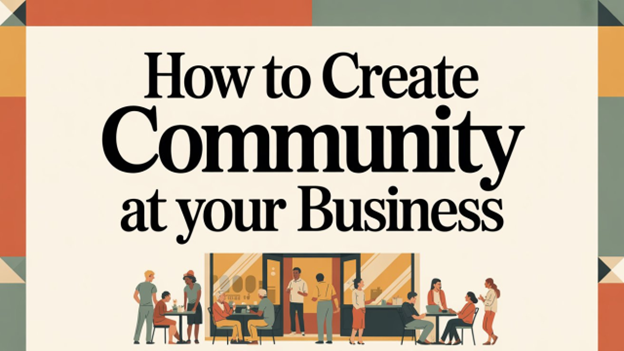The FTC Ban on Fake Reviews and the Use of Bots: Implications for Small Businesses
- The FTC has banned fake reviews and the use of bots to ensure transparency in online reviews, requiring businesses to disclose any material connections with reviewers.
- New guidelines prohibit businesses from posting false or misleading reviews and mandate that incentivized reviews must be clearly disclosed to consumers.
- These regulations aim to protect consumers from fraud and foster a fairer digital marketplace, benefiting both consumers and honest businesses.
- Small businesses can thrive by focusing on genuine customer feedback, engaging with their audience, and sharing authentic customer-generated content to build trust and credibility.
689 words ~ 3.5 min. read
The Federal Trade Commission (FTC) has made an important move to ensure transparency and honesty in online reviews by banning deceptive practices that manipulate consumer opinions. This ban focuses on fake reviews and the use of bots to create false endorsements, requiring businesses to disclose any material connections with the reviewers. As small businesses increasingly use social media for marketing, this regulation will significantly impact their operations.
The FTC has banned fake reviews and the use of bots to tackle concerns about consumer deception and the loss of trust in online marketplaces. As e-commerce and digital marketing grow, misleading reviews can skew consumer perceptions and lead to poor purchasing decisions. This regulation aims to protect consumers from fraud that can hurt their interests and damage the reputation of honest businesses. The ultimate goal is to create a fairer and more transparent digital marketplace, where genuine feedback and honest endorsements can flourish, benefiting consumers and reputable businesses alike.
What the Rules Entail
Under the new FTC guidelines, businesses can't post reviews or testimonials they know are false or misleading. If they hire third parties to generate reviews, those reviews must also follow FTC standards. If a review is incentivized—like when someone is paid or given free products—the business must clearly disclose this to consumers. Not following these rules can result in hefty penalties, including fines and damage to reputation.
All five FTC commissioners unanimously approved the final rule, which will go into effect 60 days after it's published in the Federal Register, the official government source for rules and notifications. Generally, these rules are published shortly after approval, so consumers should expect the FTC's fake-review ban to start in mid-October.
Impact on Small Businesses Using Social Media
The new FTC regulations help small business owners by encouraging honest competition, which allows them to build credibility and attract customers more effectively on social media. With the ban on fake reviews, businesses should focus on getting genuine customer feedback and creating a loyal community around their brand. This transparency can boost trust and credibility, helping to draw in more customers in the competitive digital landscape. Adjusting marketing strategies to follow these regulations will enable small businesses to succeed authentically instead of relying on misleading practices.
Three Ways to Build an Honest Following
- Encourage Real Customer Testimonials: Small businesses should ask happy customers to share their experiences on social media and review sites. Reviews listed on your Google Business Profile are one of the most reliable and powerful places to send your loyal fans. This can be done through follow-up emails after a purchase, prompting customers to leave feedback. Highlighting these genuine testimonials boosts credibility and shows a commitment to customer satisfaction, which can attract future customers.
- Engage with Customers Quickly: It's important for small businesses to actively engage with customers on social media to build loyalty. They should respond promptly to comments, messages, and reviews, whether they are positive or negative. By acknowledging feedback and showing a willingness to address concerns, businesses can create a sense of community and trust. This interaction signals to potential customers that the business values their opinions and is committed to providing a good experience.
- Share Customer-Generated Content: Encouraging customers to share their own content, like photos and stories featuring the brand's products, adds authenticity and helps to grow an engaged following. Small businesses can create unique hashtags and run campaigns to motivate users to post their content. By sharing this customer-generated content on their own channels, businesses can showcase real customers enjoying their products and strengthen the sense of community among followers.
The Takeaway
The recent FTC regulations are a vital step toward fostering a more honest and transparent online marketplace. By promoting genuine customer feedback and discouraging misleading practices, these guidelines protect consumers and support small businesses in a digital world that values authenticity. As entrepreneurs adapt their marketing strategies to comply with these new rules, they can strengthen customer connections, enhance their reputations, and contribute to a fairer online environment built on trust. Embracing this change will enable businesses to thrive by focusing on real relationships and delivering genuine value to their communities.
---
The Leavenworth-Lansing Area Chamber of Commerce is a private non-profit organization that aims to support the growth and development of local businesses and our regional economy. We strive to create content that not only educates but also fosters a sense of connection and collaboration among our readers. Join us as we explore topics such as economic development, networking opportunities, upcoming events, and success stories from our vibrant community. Our resources provide insights, advice, and news that are relevant to business owners, entrepreneurs, and community members alike. The Chamber has been granted license to publish this content provided by Chamber Today, a service of ChamberThink Strategies LLC.




